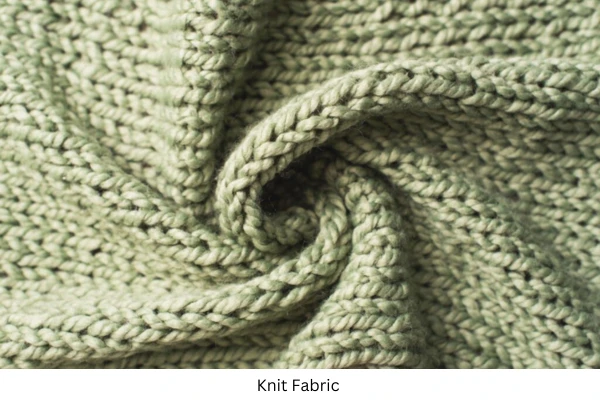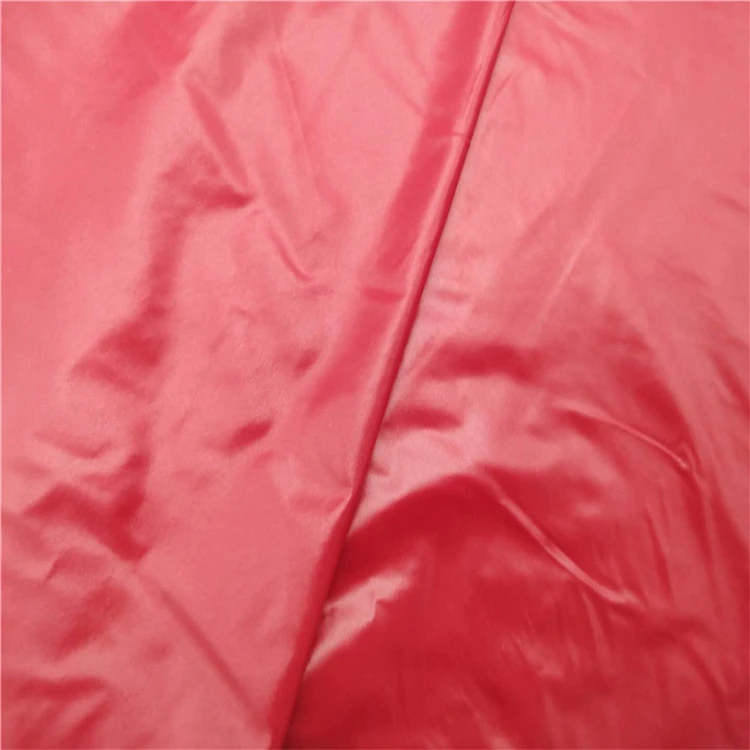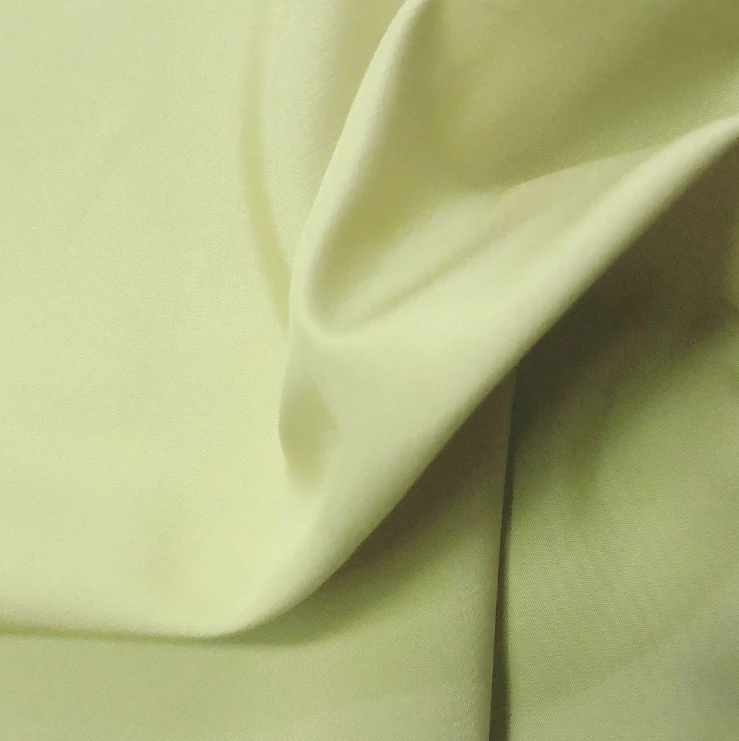Whether you have figured out an absolute understanding of the fabrics out there or not, learning more about making your clothes is important. Since fabrics possess uncountable qualities, the differences to identify them may wonder you through this article.
Table Of Contents
The Different Types of Fabric:
Fabric is entwined fiber materialled. They can be blended or patterned depending on the use and implementation. Among the two categories of fabric types, we are going to discuss the types based on the production processes (Woven, non-woven, knitted, braided). The different types of production processes and their description are given below:
1. Woven Fabric
A dual-yarn pieced material that goes interweave on a loom in both horizontal and vertical ways. It runs at a specific degree angle which is 45 degrees. This type of woven fabric consists of weft and warp. A weft is a situation when yarn covers the fabric width and when the yarn covers or goes down the loom length that becomes a warp. There are a few woven fabrics out there in the name of Chiffon, Denim, Linen, Satin, Silk, khadi, and Georgette.

Features of Woven Fabric:
- It is not stretchable
- It tends to be sturdier compared to other fabric types.
- It is durable compared to other knit and non-woven fabrics.
- Fabric width is between 59-61 inches.
- Thick and smooth
- It prefers Medium Temperature Ironing.
Types of Woven Fabric:
There are also 3 types of available woven fabric. They are:
- Plain Weave: A weave consisting of 2 ends and picks on a continuous is well-known as a plain weave. It is also known as “calico” weave for its simplest form.
Examples: Organza, Chiffon, and taffeta.
- Satin Weave: It refers to the woven fabric that creates a soft and shiny drape. There are softer parts on one side and duller faces on the other part.
Examples: Nylon, Polyester, Wool, and Rayon.
- Twill Weave: This weave is repeatable on more than 3 ends and picks with the construction of the diagonal line on the fabric face.
Examples: Denim, Chinos, and Upholstery.
Applicability of Woven Fabric
- Medical textiles: Operation outfits, Staff uniforms, bandages.
- Automotive Textiles: Airbags, carpets, Hood liners.
- Sports Textiles: Tracksuits, Trainers’ outfits, Sports shoes, pants, and shirts.
- Other than that shopping bags, travel bags, and plastic weaved is for regular use.
2. Knit Fabric
The knit fabric consists of an interconnected loop design. It allows the fabric to be stretchable. This fabric is elastic in nature and keeps itself in a good shape. Examples of knit fabric are as follows: Lycra, Mesh, and Lace.

Features of Knit fabric are:
- Stretchy and incredibly flexible
- Soft-to-touch
- Wrinkle-Resistant
- Easy Maintenance
- Prone to Pilling
- Complex for sewing.
Two types of knit fabric are as follows:
- Warp-Knitted: Warp-knitting is a method where the yarn goes in a zigzag shape with the fabric length following the knitting columns.
Example: Tricot and Raschel.
- Weft-Knitted: It is a method where fabric forms in a way that makes loops horizontal shape. Here, each prior loop gets built upon by the set of loop rows.
Examples: Jersey, Cable, and Circular knit.
Applicability of Knit Fabric
- Construction: Wallcoverings
- Medical Treatments: Bandages, surgical stockings, mattresses.
- Functional Clothing: Undershirts, Pair of Socks, trousers, long sleep shirts.
3. Non-Woven Fabric
Non-Woven Fabrics are flexible more than one fiber layered. There can be stapled, or short fiber and long fiber attached by chemical treatment. These fabrics tend to be both disposable and durable goods differing in their applicability. They tend to be lightweight compared to woven fabrics. Most of the non-woven fabrics are applicable for one-time or single use.
Examples of Non-Woven Fabric:
- Spunbond Non-Woven Fabric
- Meltblown Non-Woven Fabric
- Needle Punch Non-Woven Fabric
- Wetlaid Non-Woven Fabric
- Thermal Bond Non-Woven Fabric
- Spunlace Non-Woven Fabric
- Chemical Bond Non-Woven Fabric
- Airlaid Non-Woven Fabric
- SMS Non-Woven Fabric
- Composite Non-Woven Fabric

Features of the Non-Woven Fabric:
There are some sets of features depending on the factors of production. Their ranges are as follows:
- Resilient with a little pliability.
- It feels like woven fabric.
- In most cases, it tends to be thin except for a few thicker ones.
- Its tensile strength ranges from low to high.
- It gets fabricated by extreme heat, glue, and sewing.
- Cost-effective
- Versatile in nature.
- Abrasion and Flame Resistant.
Types of Non-Woven Fabrics
- Spunlace Non-wovens: A non-woven fabric of isotropic features that gives the fabric a direction. It is suitable mostly for industrial uses.
Example: Facial mask, medical equipment.
- Spunbond Non-Wovens: Spunbond non-wovens are continuous fibers spun made that get spread into a deflector with the direction of air streams.
Examples: Disposable diapers, carpet backings, and automotive industry use.
- Melt-Blown Non-Woven: A process where the air blows a resin named molten thermoplastic from an extruder. That extruder gets onto a conveyor in order to form a fine fiber.
Example: Medical Equipment-Surgical Gowns, Bandages, Drapes.
Applicability of Non-Woven Fabric
- Hygiene Products: Baby diapers, Feminine Products.
- Agricultural: Biodegradable plant pots, Seed Blankets.
- Automotive: Carpets, Airbags, Wheel Housing, heat shields, Dashboard Insulation.
- Medical Treatments: Disposable gowns, caps, lab coats, and bed Linens.
- Household Items: Sheets, Curtains, Carpets, Vacuum Cleaning.
4. Braided fabric
A machined or hand-made interlaced yarn forming in a narrow construction is popularly known as braided fabric. It seems like a rope thing. Yet, it consists of interweaving 3 to 4 strands in overlapping patterns. They are mostly applicable to manufacturing. Examples of Braided Fabric are- Natural and Synthetic Fiber.

Features of Fabric Types:
- Good elongation
- Pliable
- Curving edges.
- Stretchy and comes in a good shape.
- Available in flat or 3-dimensions.
Types of Braided Fabric are:
- Tubular formed Circular or Round Braids: These form around a central core combining two sets of spools. Tubular braids are also popular as stranded wire. They are flexible and come in different sizes.
Examples: Handcraft, Fashion wear, Menswear.
- Strips or Narrow tapes formed Flat Braids: As a finishing method, flat braid produces a decorative effect. Mostly, those effects work on garments and other home furnishings.
Examples: Parachute cords, Shoelaces, and Fish lines.
Applicability of Braided Fabric
- Regular Use: Shoes, Medical Applications, Fishing nets, Parachute lines, Dental Floss
- Rope-Like Things: Ski-ropes, Mountaineering ropes, yachting ropes, and mooring lines.
Final Words
The more understanding, the merrier the creation. That is how we admire our textile understanding when the common fabrics always revolve around our heads whenever we think to make an item of durable clothing. When Woven fabrics get utilized in the fashion industry and interior designs, we hardly find non-woven ones completely out of the fashion world. Meanwhile, knitted fabrics already cover up the comfort zone by expanding their uses in regular garments. And braided? They are coming up with new structures to make the process simpler compared to weaving based on demand.​​​​​​​
















Comments - 00
Leave A Reply
Thanks for choosing to leave a comment.